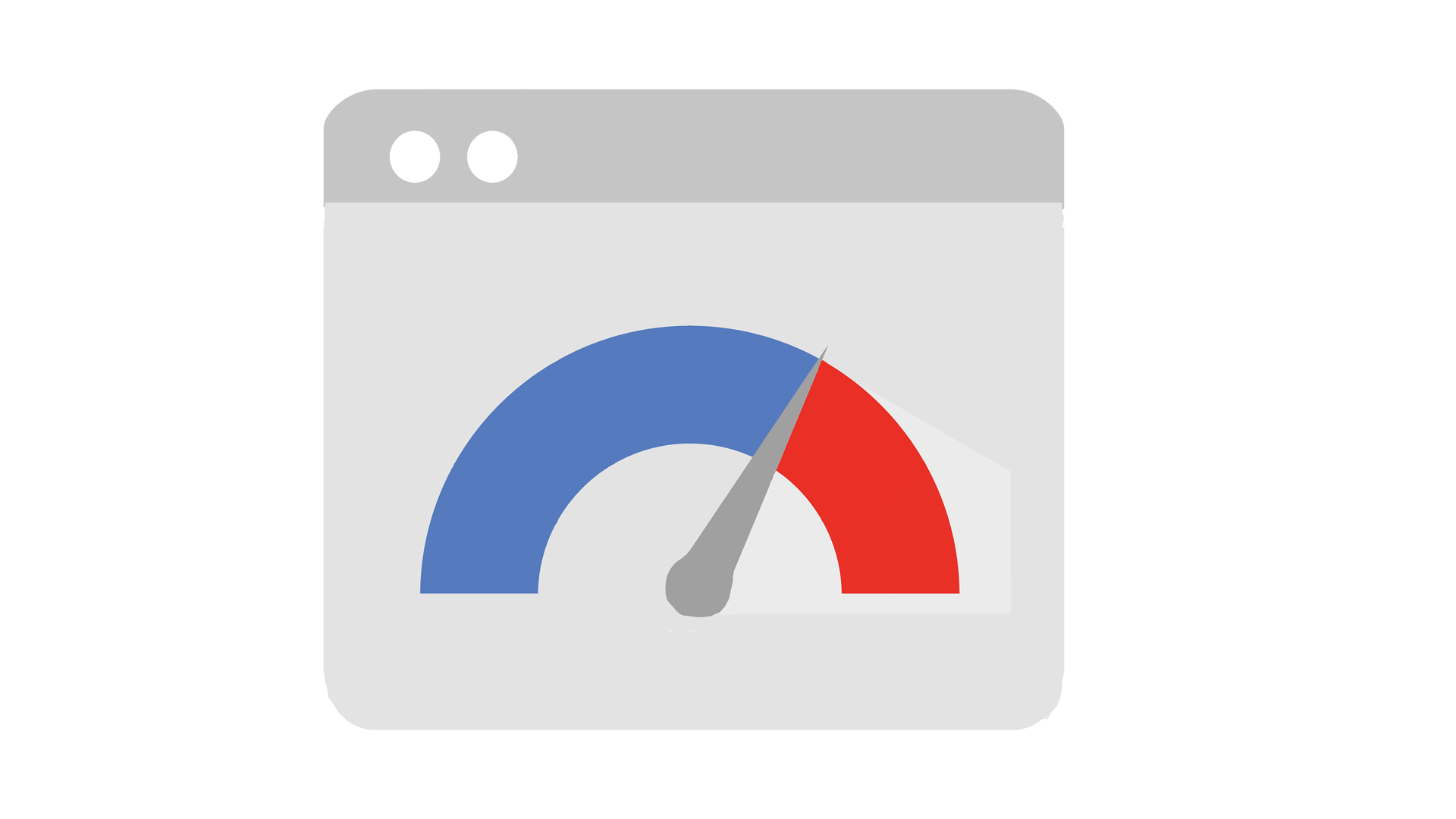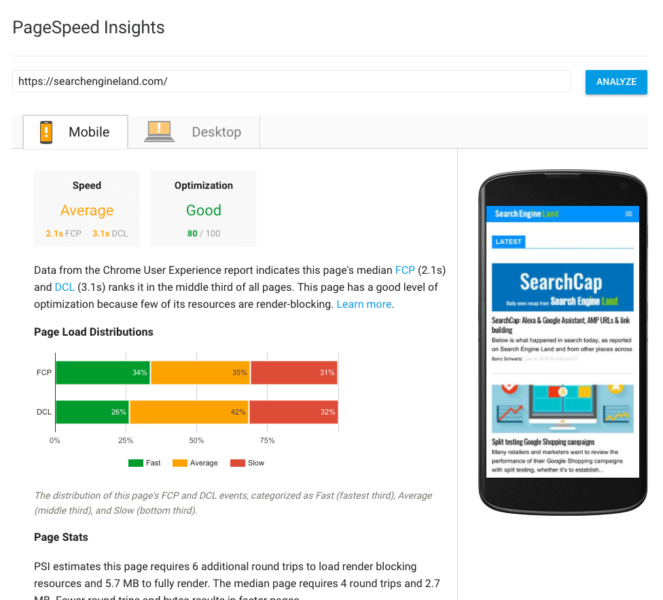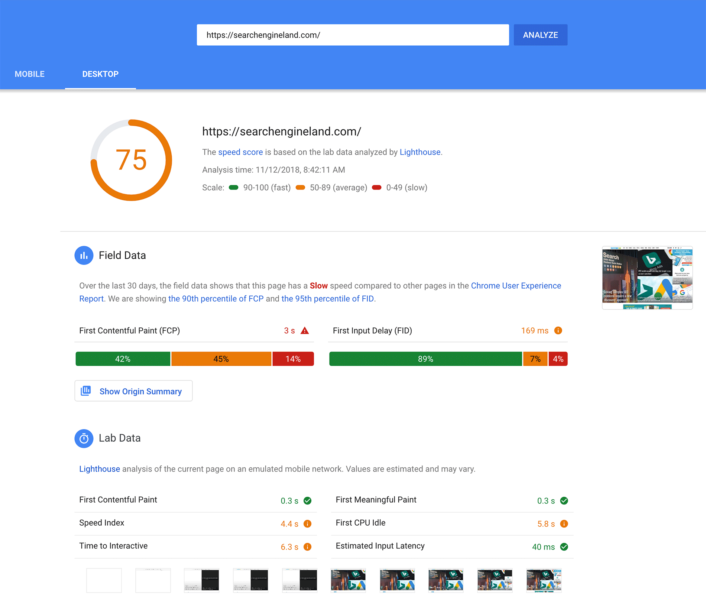
Google has quietly rolled out a new update to its PageSpeed Insights tool, the first large update since January 2018 when Google began using real user data from the Chrome browser to measure page speed of a site. The new update today uses Lighthouse, a speed tool from Google, as its analysis engine and also incorporates field data provided by the Chrome User Experience Report (CrUX) into the tool.
Lighthouse and CRUX. Version 5 of the release notes says, “v5 of the PageSpeed Insights API was released in November 2018. It now uses Lighthouse as its analysis engine and also incorporates field data provided by the Chrome User Experience Report (CrUX). v5 of the API will now provide CrUX data and all of the Lighthouse audits. Previous versions of the PSI API will be deprecated in six months.”
A look before and after. This is what the PageSpeed Insights dashboard looked like earlier this year:
This is a look at the new report. It has two tabs, one for desktop and one for mobile.
What data is in the updated tool? The new toolset breaks up the report into several categories including:
- Field Data: This uses the Chrome User Experience report and shows you the First Contentful Paint (FCP) and the First Input Delay (FID).
- Lab Data: Lighthouse analysis of the current page on an emulated mobile and plots metrics from that tool including First Contentful Paint, Speed Index, Time to Interactive, First Meaningful Paint, First CPU Idle, Estimated Input Latency and then shows screen shots of how this is viewed.
- Opportunities: Shows you ways to improve the performance of that specific page including the areas of issues and how much they are slowing down your page.
- Diagnostics: This gives you a report on the performance of your application for things like caching, DOM size, payloads, JavaScript and much more.
- Audit: Then the report shows you how well you did on various audits including Minify JavaScript, CSS, redirects and so much more
Why does it matter? Making your site faster is not just important to ensure your web site is ranking well in Google search Speed Update. It can improve user experience and conversion rates on your web site. This PageSpeed Insights tool update has vastly improved the data and metrics around how to measure your page speed. It gives you many areas of where you can make improvements to your pages and thus increase the speed of your pages.
It may be worth having your development team look at this report and find quick methods to improve the page speed of your site. The API of the PageSpeed Insights tool was upgraded to version 5 as well. Google said version 4 of the API will be deprecated in May 2019, so you will need to upgrade to version 5 soon.
Postscript: Several hours after this story, Google announced the changes on their own blog.





